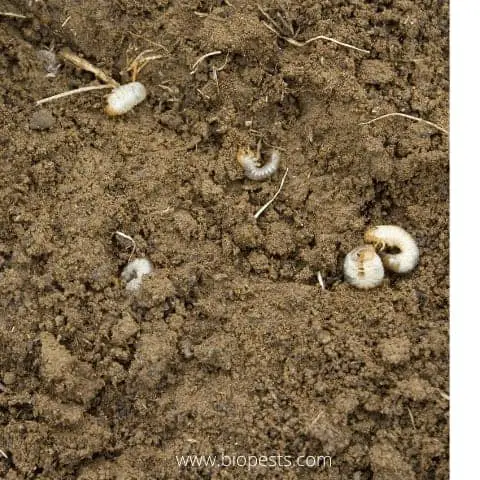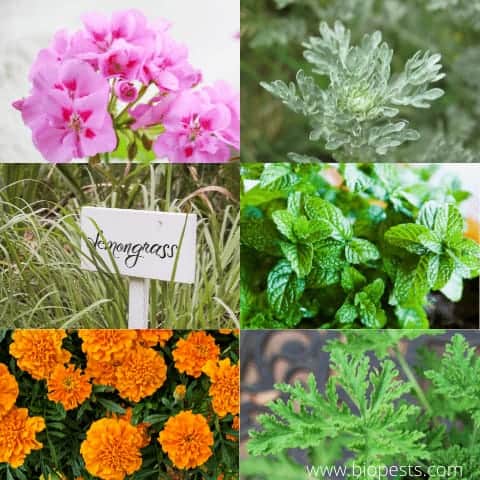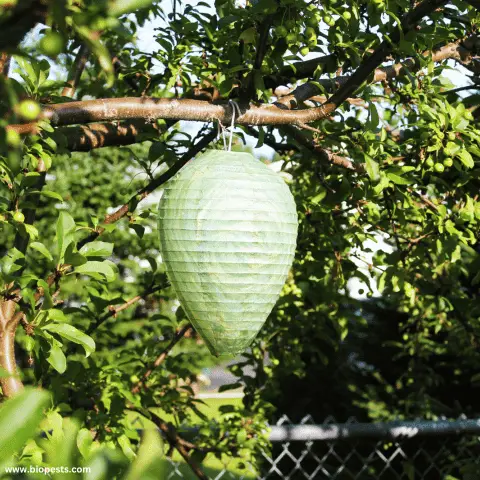Wasps are beneficial insects to have in your yard because they provide pollination (although to a much lesser degree than bees), and they also prey on many other garden pests. However, they can also be dangerous to humans and pets, and so you do not want them too close to your house or on your lawn, where you can easily encounter them. But what brings wasps to your lawn?
Wasps are on your lawn because they are hunting and feeding on insects and grubs on your grass or in the ground. Wasps are on your lawn because they are feeding on sugary substances like fruit, honeydew, and spilled food. Wasps are on your lawn for egg-laying purposes.
There are three possible reasons why wasps would be on your lawn, but many more methods by which you can get rid of them naturally. This article defines these reasons and details these methods.
Reasons Why There Are Wasps On Your Lawn
Understanding why wasps would be on your lawn is a great way to know how to get rid of them.
Wasps Are On Your Lawn Because They Are Hunting Live Prey
Wasps hunt live prey to either eat themselves or to give to their larvae. If you have insects, etc., on your lawn or in the soil beneath the lawn grass, then wasps may be seen to land or fly low to the ground in order to catch their prey.
Wasps will feed on the following:
- Various members of the Coleoptera family of insects. These are commonly known as beetles, and the wasps will eat both the larvae (grubs) and adults
- Various members of the Diptera family of insects. These are commonly known as flies, and wasps will eat both the larvae (maggots) and adults.
- Various members of the Hemiptera family of insects. These are commonly known as true bugs.
- Various members of the Hymenoptera family of insects. This is interesting because wasps belong to the Hymenoptera insect family, so wasps are cannibalistic.
- Various members of the Lepidoptera family of insects. These moths and butterflies and wasps will eat both the larvae and the adults.
- Various members of the Orthoptera family of insects. These are the hopping insects like crickets, locusts, and grasshoppers.
- Various members of the Psocoptera family of insects. These are commonly known as booklice or bark flies.
- Various members of the Acari family of arachnids. This is the family to which ticks and mites belong.
- Various members of the Araneae family of arachnids. These are spiders. Wasps do not just hunt small spiders. Terrifyingly, they can be aggressive, potent, and strong enough to kill and eat spiders as big as rain spiders.

The availability of each of these food sources in your yard for wasps, and therefore the likelihood of wasps being on your lawn for the purposes of hunting, depends on a number of factors.
These factors include location, season, and the effectiveness of the pest control methods that you use to keep these non-wasp pests out of your yard.
Wasps Are On Your Lawn Because They Are Feeding On Sweet Substances
Wasps do not only eat live prey; they also feed on sugary substances.
These sugary substances can include the following:
- Fallen fruit from trees and bushes. This does not only include fruit that humans are able to eat. Any fruit-producing plant can be a source of attraction for wasps.

- Honeydew, which is the sticky secretion produced by aphids and other similar bugs that have been feeding on plants’ and flowers’ sap.
- Any other non-natural source of sugar. This includes things like spilled drinks, especially fruit juices, sodas, dropped food, etc.
Wasps Are On Your Lawn Because They Are Laying Eggs
Not all wasps build nests in which they can lay their eggs. Some species of wasps will dig tunnels into the ground and lay their eggs in these tunnels.
This method is actually very interesting because the wasps do not simply lay the eggs in the tunnels they create. They will also provide them with a food source once they hatch.
This often involves immobilizing, but not killing, another insect or arachnid and then leaving it in the tunnel with the eggs.
This immobilized victim will survive but not be able to escape until the larvae are hatched, at which point it becomes the first food source for the wasp offspring.
Another method that the wasps use to ensure that their offspring will have an immediate food source is to actually lay their eggs in the insect or arachnid.
Thus, you may see wasps on your lawn as they burrow into the ground and lay their eggs, or as they lay their eggs directly into insects and spiders that are living in your lawn.
How To Naturally Get Rid Of Wasps From The Lawn
You do not have to turn to pesticides in order to solve your lawn wasp problem, nor is it necessary for you to contact and hire a professional to do the job. There are plenty of simple and natural methods by which you can achieve your purpose. These include the following:
- Homemade wasp-repellent sprays
- Plant wasp-repellent plants
- Install a wasp nest decoy
- Uproot plants that attract wasps
- Keep your yard tidy
We will look at each method in more detail in the following sections.
Get Rid Of Wasps From Your Lawn Using Homemade Wasp Repellent Sprays
You will have to set up a regular schedule for the reapplication of the homemade wasp repellent, and you will also have to reapply after rain.
Essential Oil Repellent Sprays
There are so many excellent homemade wasp-repellent sprays that you can mix up using essential oils and easily accessible household products.
You can spray around your yard and the outside of your house, wherever you think wasps may try to build their nests.
Wasps do not like the smell of clove, geranium, lemongrass, and peppermint essential oils. So, you can make up a homemade repellent using each of these or a combination of two or more of them.
To make the essential oil wasp repellent, you should mix several drops of your chosen oil or oils along with some organic dish soap into a spray bottle filled with water.
Dish soap is very important for the proper dispersal of the oil in the water because, as you know, oil and water cannot mix together.
Alternatives To Essential Oil Repellent Sprays
If you don’t have essential oils or you would prefer not to use them in a yard repellent (essential oils can be expensive), then there are other simple but effective wasp-repellent sprays that you can mix up.
The first is a mixture of water and vinegar, and the second is just a soapy water solution.
Get Rid Of Wasps From Your Lawn By Planting The Right Plants
You can keep wasps away from your lawn and out of your yard by planting some naturally wasp-repelling plants.
You can plant these as borders around your yard, you can add a few into your flowerbeds, or you can even replace whole flower beds with them—they are not unpleasant to look at.

The seven main plants that are the most successful for this are:
- Wormwood: Wormwood is also known as Artemisia absinthium, and it is an aromatic herb. Wormwood actually has many uses in herbal medicines, so having it planted in the garden can have a two-fold benefit.
- Mint: Mint is also known as Mentha spp., and it is not only useful in repelling wasps. It is also a versatile cooking herb, so it makes a perfect addition to your kitchen garden. Moreover, it is a bright, low-maintenance ground cover plant.
- Eucalyptus: Eucalyptus is both the common name and the genus for this plant, Eucalyptus spp. Eucalyptus is another fragrant, beautiful, and medicinally beneficial plant, so growing it in your garden is actually desirable for multiple reasons.
- Citronella: Citronella is also known as Cymbopogon spp. and it is an incredible repellent, not just for wasps but also for many other bugs on which wasps feed. This means that citronella repels wasps both directly (through the aroma) and indirectly (by reducing their food source). Lemongrass is a species of Cymbopogon.
- Marigolds: Marigolds are also known as Tagetes spp., and they are a very bright and beautiful option if you are looking to replace some of your wasp-attracting flowers.
- Geraniums: As with Eucalyptus, Geranium is the genus as well as the common name for these plants. They have vibrant green leaves with pops of bright and colorful flowers, making them another great replacement for your wasp-attracting flowers in your yard.
Install A Wasp Nest Decoy Nearby
A wasp nest decoy is a clever device that mimics the appearance of a real wasp nest. The idea is to create the illusion that a colony of wasps already has a presence in the area, which will deter other wasps from building their nests nearby. These decoys are usually made from paper or plastic and come in various shapes and sizes. Here are some examples of wasp decoys you can buy online.
How Do They Work?
The wasp nest decoy works by tricking other wasps into thinking that a real nest is already in the area. Wasps are territorial creatures, and they will avoid nesting in close proximity to another colony. By installing a decoy, you create the impression that the area is already claimed, and as a result, other wasps will stay away. The decoy should be installed early in the season before real wasp nests start to appear.
Where Should You Install a Decoy?
When it comes to installing a wasp nest decoy, placement is everything. You want to install it in a visible location so other wasps can see it from a distance. Ideally, it should be positioned in an area where you have previously had a problem with wasps or where you want to discourage them from nesting. It’s important to remember that these decoys are only effective for a certain radius, so if you have a large garden or multiple outdoor areas, you may need to install more than one.

How Effective Is a Wasp Nest Decoy?
While a wasp nest decoy may not be a foolproof solution, it is a simple, cost-effective way to keep wasps at bay. Many people report success with this technique, and it’s certainly worth a try if you’re struggling with a wasp problem. It’s important to remember that while the wasp nest decoy is a great preventative measure, it won’t help if you already have a wasp nest in your garden. If this is the case, you will need to take more drastic action to remove the nest.
Get Rid Of Wasps From Your Lawn By Uprooting The Wrong Plants
Planting wasp-repelling plants in your yard is actually only a partial solution. You also have to make sure that you do not have wasp-attracting plants in your yard. So, what plants attract wasps?
- Queen Anne’s Lace: Queen Anne’s Lace is also known as Daucus carota or wild carrot, and it is a flowering herb native to Europe. While beautiful with its delicate flowers, this plant attracts wasps.
- Sweet fennel: Sweet fennel is also known as Foeniculum vulgare, and it is a plant that is commonly used in cooking. However, if you have a problem with wasps on your lawn, then you should consider uprooting it and just buying it from the store when you need it for a dish.
- Yarrow: Yarrow is also known as Achillea Millefolium, and it is a very sweet and pretty flowering herbaceous plant, but it is not worth keeping if you have a wasp problem. As mentioned previously, rather plant some marigolds or geraniums.
Beyond this, you can watch the wasps and see what plants they tend to congregate around when they are not on your lawn. Then, if you are happy to, you can uproot these plants and replace them with wasp-repelling plants.
Get Rid Of Wasps From Your Lawn By Keeping Your Yard Tidy
Keeping your yard tidy can help you to keep the wasps off your lawn because it removes the wasps’ food and water sources.
It might take a few days for the wasps to realize that your yard is no longer a viable source of food, but after this, you should notice a decrease in the number of wasps on your lawn or at least the frequency with which they enter your yard.
Eliminate Sources Of Standing Water
Wasps and the creatures on which they feed need access to water, so if you make sure that there is no water standing in your yard, you decrease the chances of wasps coming into your yard.
Sources of water can include birdbaths, leaking yard faucets or hoses, gutters, and areas of poor drainage.
Clean Up Fallen Fruits
As mentioned previously, wasps are attracted to any fallen fruits from trees and plants. So, if you have fruit trees or berry shrubs, etc., you need to make sure that you clean up any fallen fruits on a daily basis.
Regularly harvesting the fruit when it is ripe will also help to minimize the number of fruits that fall on the ground.
If you are not that attached to the fruit trees or plants, or if they are no longer yielding good fruit, then you can also consider removing them from your yard.

Make Sure Your Trash Cans Are Emptied Regularly And Sealed
Sweet and sticky substances in trash cans, as well as the flies and other insects they attract, are excellent sources of food for wasps.
So, if your trash cans are overflowing or if they do not close properly, they can become the reason you are struggling with a wasp problem.
You should also make sure that you clean the trash cans on a regular basis as sticky substances often leak out of small tears in the trash bags and are able to pool and collect pool at the bottom of the trash can.
Do Not Leave Pet Food Out
Pet food, especially wet pet food, can attract insects that wasps feed on, thereby attracting the wasps themselves.
You should pick up your pet’s food if they do not finish eating it. You can put it in the fridge until later and try to offer it to them again, but at least it is not sitting out drawing the insects.
If your pet does finish its food in one sitting, then be vigilant about picking the bowl up and cleaning it.
Sweep Up Yard Debris
Yard debris makes ideal living and breeding grounds for many insects, including those on which wasps feed. So, by keeping your yard free of excess debris, you minimize the likelihood of having wasps on your lawn.
A Quick Note About Getting Rid Of Wasps From Your Lawn
While wasps can be dangerous and they are certainly not always welcome, if there are only a few in your yard, then it might be better just to leave them.
They are very good at keeping the populations of other garden pests under control, and you might find that in chasing the wasps away, you have traded one problem for multiple problems.
Conclusion
Having wasps on your lawn is not ideal, even if they can contribute some benefits to the ecology of your yard and area.
Your lawn is supposed to be a safe place for you, your family, and your pets to enjoy when the weather is favorable.
Wasps are attracted to your lawn specifically for three primary reasons.
Firstly, wasps are carnivorous, and so they are attracted to the grubs and insects that live or land on your lawn or the underlying soil.
Secondly, wasps are attracted to the sugary substances contained in fallen fruit, aphid honeydew, and spilled food and drinks.
Thirdly, some wasps lay their eggs in the ground or in the white grubs living in the soil.
Getting rid of wasps naturally is really not difficult, and there are many options available to you.
The main methods include keeping your yard clean, uprooting certain plants, planting others, and mixing up homemade and natural repellent to spray around the yard.
Some of the links above are affiliate links, meaning I will earn a commission if you click through and make a purchase at no additional cost to you.

